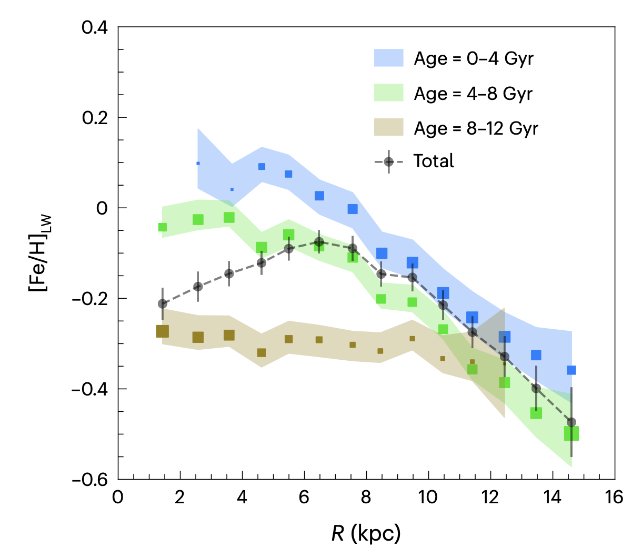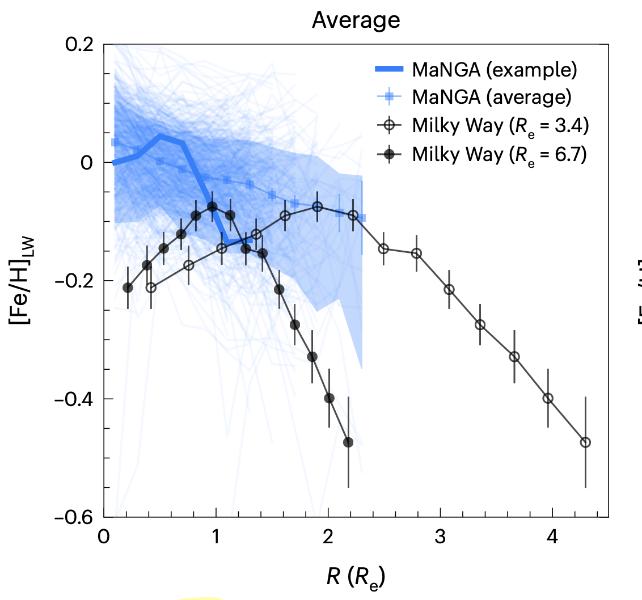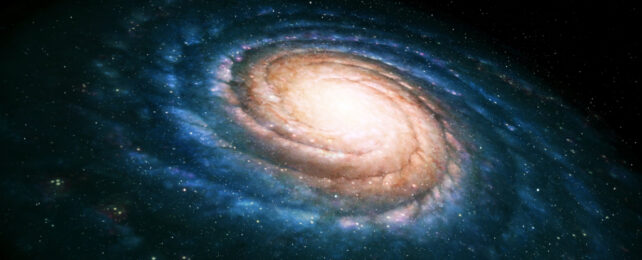Alien astronomers living in another galaxy might see our Milky Way's 100 billion stars as little more than a tiny blur of light in their night sky. Yet if they analyzed the frequencies of light in that faint smudge, they might be able to decipher what our galaxy is made of.
This raises the question: What does the Milky Way's chemistry look like from millions of light years away?
Research led by the Max Planck Institute for Astronomy in Germany and Yunnan University in China has provided an answer: Our galaxy is an oddball, though not one-of-a-kind.
The Milky Way sticks out among other similarly sized galaxies with metal concentrations that are very low at the center, rise towards the halfway point, and then peter out on the outskirts of the galaxy.
By comparison, the metal distribution of other galaxies is much flatter, more like a pancake than a doughnut.
Our galaxy "is not unique but is not common", the researchers report. "The Milky Way might not have a typical metallicity distribution for a galaxy of its mass."
Astronomers use the word 'metal' to refer to all elements that are heavier than hydrogen and helium.
Hydrogen and helium nuclei formed around three minutes after the Big Bang, with electrons hitching a ride around 380,000 years later to make atoms. Heavier elements are the product of billions of years of stellar evolution, requiring more time to emerge.
For this reason, stars that were born earlier in the history of the Universe tend to have fewer metals than those born later.

The researchers compared our Milky Way to 321 galaxies of similar masses observed as part of the Mapping Nearby Galaxies at Apache Point Observatory (MaNGA) survey.
They found that only one percent of these galaxies matched the Milky Way in terms of metal distribution.
The researchers also compared the Milky Way with 134 galaxies created in the TNG50 simulation of the Universe, which modeled the evolution of tens of thousands of galaxies over a 13.8-billion-year period.
Only 11 percent of the simulated galaxies were like ours.

Why is our Milky Way so strange?
There are a few explanations. Perhaps the older stars with lower metal content used up all the resources at the center of the galaxy. This would mean that few young stars were born there, which would explain the dip in metals at the center.
Alternatively, the supermassive black hole at the center of the Milky Way may have spewed out radiation as it ate, making star formation in the center difficult.
The scarcity of metals at the edges of the Milky Way could be caused by our galaxy swallowing another galaxy with low metal content.
Another possibility is that the estimated size of the Milky Way's disk of stars was wrong, which might be addressed in upcoming surveys such as the WHT Enhanced Area Velocity Explorer (WEAVE) and the Sloan Digital Sky Survey V (SDSS-V), say the researchers.
"Finding ways to compare our home galaxy with more distant galaxies is what we need if we want to know whether the Milky Way is special or not," says lead author and astronomer Jianhui Lian.
"This has been an open question since astronomers realized a hundred years ago that the Milky Way is not the only galaxy in the universe."
This paper was published in Nature Astronomy.
